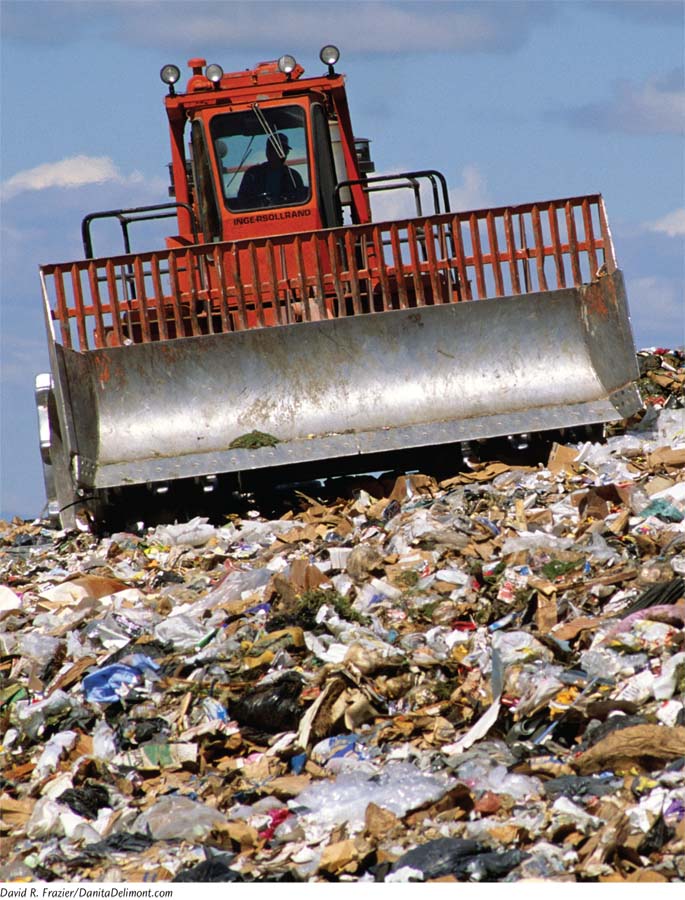Chapter Introduction
chapter 16
Waste Generation and Waste Disposal

Paper or Plastic?
Polystyrene is a plastic polymer that has high insulation value. More commonly known by its trade name, Styrofoam, it is particularly useful for food packaging because it minimizes temperature changes in both food and beverages. Polystyrene is lighter, insulates better, and is less expensive than the alternatives. However, a number of years ago, polystyrene was deemed harmful to the environment because, like all plastics, it is made from petroleum and because it does not decompose in landfills. In response to public sentiment, most food businesses greatly reduced or eliminated their use of polystyrene. All over the country, schools, businesses, and public institutions have purged their cafeterias of polystyrene cups and most have replaced them with disposable paper cups.
Today, there is still no definitive answer as to whether the paper cup or the polystyrene cup causes less harm to the environment.
But was the elimination of polystyrene actually an environmental victory? It is hard to quantify the exact environmental benefits and costs of using a paper cup versus using a polystyrene cup. For example, because a paper cup does not insulate as well as a Styrofoam cup, paper cups filled with hot drinks are usually too hot to hold and vendors often wrap them in a cardboard band that becomes additional waste. To fully quantify the environmental costs and benefits of each type of cup, one must create a list of inputs and outputs related to their manufacture, use, and disposal. This input-
One study found that making a paper cup requires approximately 2 grams of petroleum along with 33 grams of wood and bark, which are renewable materials. A polystyrene cup requires 3 grams of petroleum, a nonrenewable material, but no wood or bark. Manufacturing the paper cup requires about twice as much energy, and much more water. A paper cup of the exact same size as a polystyrene cup is substantially heavier, which means it requires more energy to transport a paper cup to the location where it will be used. Air emissions are different in the manufacturing of each type of cup and it is difficult to say which emissions are more harmful to the environment. Since more energy is needed to make and transport a paper cup, it is reasonable to assume that using it generates more air pollution. A paper cup is normally used once or at most a few times while the polystyrene cup can, at least in theory, be reused many times. However, both types of cups are usually thrown away after one use. There has been concern among some scientists—
Weighing these and other factors, one study concluded that a polystyrene cup is more desirable than a paper cup for one-
These types of studies illustrate that analyzing the environmental effects of the products we use is complex since it involves the synthesis of many aspects of environmental studies. Not only does it include science, ethics, and social judgments, it also necessitates a systems-
Sources: M. B. Hocking, Paper versus polystyrene: A complex choice, Science 251 (1991): 504–
As life in many countries has become increasingly dependent on disposable items, the generation of solid waste has become more of a problem for both the natural and human environments. In this chapter, we examine solid waste, something that only humans generate. We examine methods of reducing waste and ways of recycling. Then we describe the principal methods of getting rid of waste: landfills and incineration. We also consider the most toxic forms of waste: hazardous waste. We conclude the chapter with a discussion of innovative ways to think about solid waste from a systems perspective.